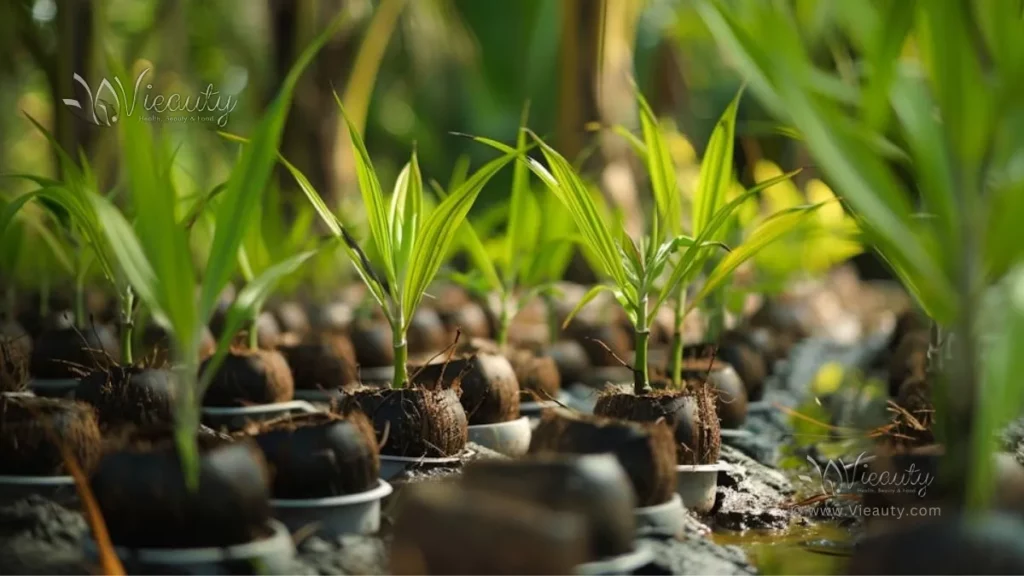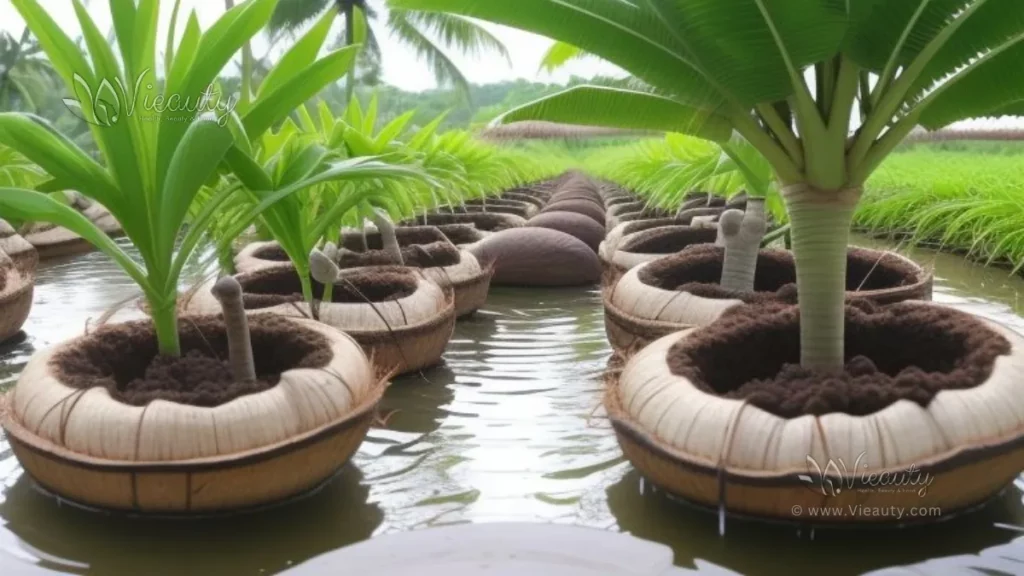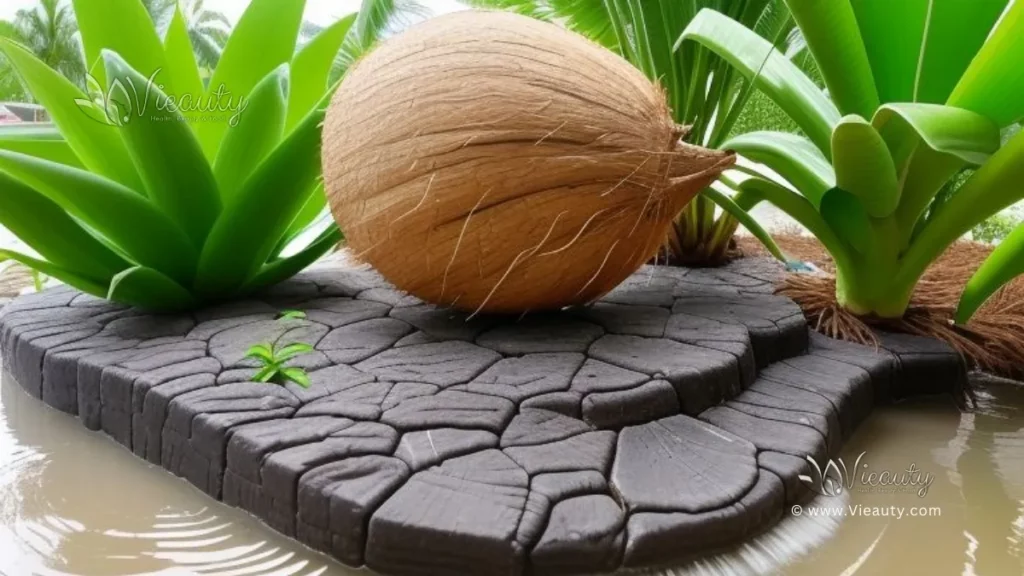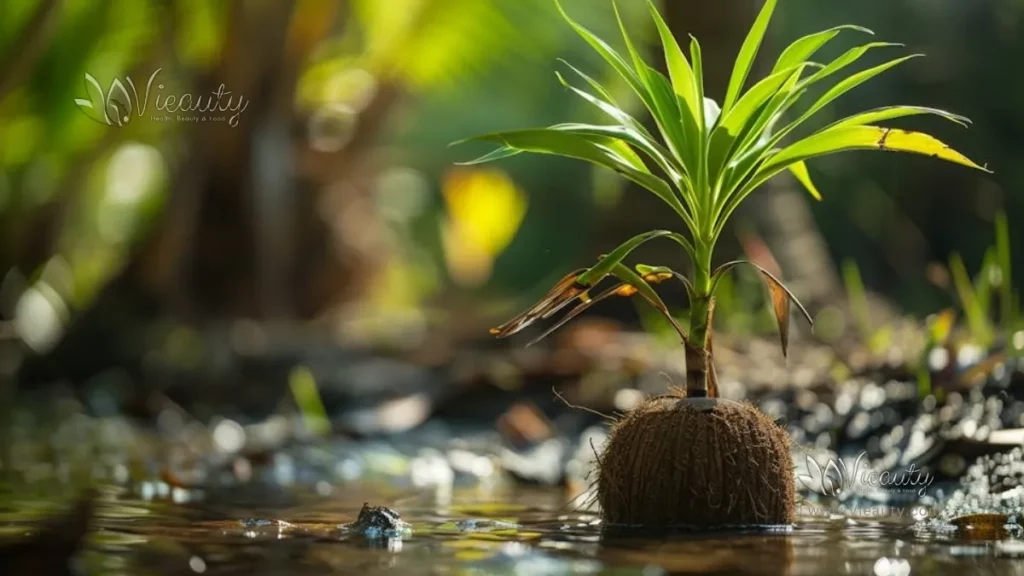Unlock the Propagation Secrets: 8 Steps to Grow Coconut Trees from Water!
Mastering Water Propagation: Growing Coconut Trees from Scratch
Are you ready to embark on a journey that delves deep into the secrets of growing coconut trees from water? Water propagation, a fascinating method that unlocks the potential of coconut seeds, holds within it a world of magic waiting to be discovered. In our quest to master water propagation, we’ll explore 8 Steps to Grow Coconut Trees from Water which can lead to the creation of vibrant and flourishing coconut trees right before your eyes. This article is not just about planting; it’s about initiating life itself from scratch and witnessing the awe-inspiring process firsthand.
Imagine the satisfaction of nurturing a delicate seed into a strong and majestic coconut tree – only by harnessing the power of water. Growing coconut trees from water is more than just gardening; it’s about understanding and respecting nature’s intricate dance of growth. The benefits extend beyond mere visuals, as cultivating coconut trees in water allows for a profound connection with each phase of development.
Join us as we unravel the importance and advantages of this unique method, where patience meets wonder, and every step brings you closer to witnessing nature’s marvel unfold right in your hands. Let’s dive into an adventure where water becomes the cradle for new life—coconut trees born from scratch with your guiding hand!
Preparation Steps for Water Propagation
Before diving into the exciting world of growing coconut trees from water, it’s vital to set the stage right with meticulous preparation. First and foremost, gather your essentials – fresh coconuts brimming with potential, containers large enough to comfortably accommodate them, and ample water to kickstart their growth journey. These basic materials will be the backbone of your coconut tree propagation experiment.

Now comes the fun part! Selecting the right kind of coconuts is like choosing prime seeds for a flourishing harvest. Opt for coconuts that are mature but not too old, ensuring they have viable seeds inside. To prepare these coco gems for water propagation magic, you can roughen up the exterior slightly using sandpaper or a file; this little scratch will aid in water absorption and set the wheels in motion for sprouting.
Creating an optimal environment akin to a cozy nursery for your coconut seeds is essential for successful germination. Find a warm spot with indirect sunlight where your containers can rest undisturbed during this crucial phase. The ideal temperature range should mimic tropical conditions, as coconut trees thrive in warmth. Now sit back, relax and watch nature work its miracle as you embark on this intriguing process of coaxing life out of those humble coconut shells through water propagation.
Seed Germination Process
After completing the initial steps of preparing your coconut seeds for water propagation, the next crucial phase is the seed germination process. Once you have positioned your coconut seeds in water, allow them to soak and begin the enchanting journey of sprouting into life. This soaking initiates the germination process as the seeds absorb water and vital nutrients necessary for growth.
As you eagerly anticipate signs of new life emerging from your coconut seeds, it’s essential to closely monitor their progress. Keep a keen eye out for the first visible indicators of growth – root emergence and shoot development. These early stages are not only exciting to witness but also provide valuable insights into the health and vitality of your soon-to-be coconut plants.

Once you notice substantial root growth and strong shoot development, it’s time to transition your germinated coconut seeds from water into soil. By this stage, a robust root system will establish itself in preparation for sustained growth in a nutrient-rich environment. Carefully transferring these young seedlings into soil sets the stage for further development and marks a significant milestone in your journey towards cultivating thriving coconut trees.
This delicate yet rewarding process encapsulates the wonder of nature as tiny seeds transform into potential towering coconut palms under your nurturing care. Stay attuned to these transitional phases, recognizing each subtle change as a step closer to witnessing flourishing coconut trees taking root in your garden or landscape.
Transplanting Coconut Seedlings into Soil
Once your coconut seeds have successfully germinated in water, it’s time to carefully transition them into soil for further growth. Begin by preparing a soil mixture that is well-draining and rich in nutrients, providing the young coconut plants with a supportive environment. A simple mix of potting soil, sand, and organic compost can create an ideal blend to nurture the roots as they expand into the soil.
With your prepared soil mixture ready, gently remove the germinated coconut seedlings from the water and transplant them into pots or garden beds. Handle the delicate roots with care to avoid damage during this crucial step. Ensure that the roots are covered adequately with soil while leaving the shoot above ground level for proper exposure to sunlight.

To promote healthy growth in soil, it is essential to maintain proper watering and ensure adequate sunlight for the coconut plants. Water the transplanted seedlings regularly but be cautious not to oversaturate the soil. Moreover, place your pots or garden beds in a location that receives plenty of sunlight, as coconut trees thrive in full sun conditions. By providing these basic necessities, you set your young coconut plants up for successful development as they transition into their new growing medium.
As your coconut seedlings adjust to their new home in soil, continue monitoring their progress closely. Keep an eye out for any signs of stress or nutrient deficiencies that may manifest through changes in leaf color or growth patterns. By offering consistent care and attention during this critical phase of transplantation, you foster strong root establishment and overall vigor in your growing coconut trees.
Maintenance Tips for Young Coconut Plants
After successfully transplanting your germinated coconut seedlings into soil, it is crucial to provide the right care to ensure their healthy growth. Here are some essential maintenance tips for young coconut plants that will help nurture them into robust trees.
Firstly, remember to regularly check the soil moisture levels around your young coconut plants. Coconuts thrive in well-draining soil that is kept consistently moist but not waterlogged. By monitoring the moisture content of the soil, you can adjust your watering schedule accordingly to provide adequate hydration for the plants. Proper hydration is vital for the development of a strong root system and overall plant health.
In addition to watering, it is important to protect your young plants from pests and diseases that can hinder their growth. Implement preventive measures such as neem oil sprays or natural insect repellents to keep common pests like mites or aphids at bay. Regularly inspect the leaves and stems for any signs of pest infestations or disease symptoms, and take prompt action to address these issues before they escalate.
Furthermore, promoting healthy growth in your young coconut plants involves occasional pruning. Trim any damaged or yellowing leaves, as well as branches that show signs of disease or decay. Pruning encourages new growth and redirects energy towards developing a strong tree structure. By maintaining a clean and healthy environment around your coconut plants, you are setting the stage for successful growth and future fruit production.
Fostering Growth and Fruit Production from Coconut Seeds
To ensure the robust growth and successful fruit production of your coconut trees, implementing a fertilization schedule is crucial. Coconut trees require a balanced mix of essential nutrients to thrive. Consider using a specialized fertilizer designed for palm trees or create a custom blend rich in potassium, phosphorus, and nitrogen to support healthy growth. Regularly feeding your coconut tree with the right nutrients will promote strong root development and lush foliage.
As your coconut tree grows taller, it’s important to provide structural support to prevent leaning or breakage. By using stakes or ties strategically placed near the trunk, you can help the tree maintain an upright posture as it matures. Gently securing the tree to these supports will ensure that it grows straight and stable, allowing for proper nutrient uptake and reducing the risk of damage during inclement weather.
Understanding the factors that influence flowering and fruiting in coconut trees plays a pivotal role in maximizing your harvest yield. Factors such as temperature, humidity levels, sunlight exposure, and soil conditions all contribute to flower initiation and eventual fruit set.
By closely monitoring these environmental variables and making necessary adjustments, you can encourage prolific flowering in your coconut tree, leading to bountiful fruit production. Remember that patience is key when waiting for coconuts to develop fully; typically taking 6-10 months post-flowering before they are ready for harvesting.

By diligently following these steps to foster growth and enhance fruit production in your coconut trees through proper fertilization, structural support, and understanding flowering processes, you’ll be well on your way to enjoying a flourishing coconut grove laden with fresh fruits ripe for picking when the time comes.
Unlocking the Bounty
Harvesting Coconuts from Grown TreesAs you embark on your journey of cultivating coconut trees from water, the final step of harvesting coconuts is both satisfying and rewarding. Knowing when to reap the fruits of your labor involves observing key signs such as the color change of the coconuts and their sound when tapped – a dull thud indicating ripeness.
Once these signs manifest, it is time to safely harvest mature coconuts using proper tools like long-handled pruners or a saw. By gently twisting and pulling, you can detach ripe coconuts without causing damage to the tree.
In Summary
In conclusion, mastering water propagation techniques for growing coconut trees unveils a fulfilling cycle – from nurturing seeds in water to reaping the benefits of fresh coconuts. The journey not only imparts valuable knowledge about plant growth but also fosters a deeper connection with nature’s processes. With patience, care, and knowledge gained from this guide, you can enjoy the sweetness of success as you watch your coconut trees flourish and bear luscious fruits through each stage of growth. Happy planting!
FAQs
Q: How long does it take to see roots forming when growing coconut trees from water?
A: Typically, you can expect to see roots starting to emerge within 2-3 months of placing the coconut in water. However, exact timing can vary depending on various factors such as temperature and sunlight exposure.
Q: Can I use any type of coconut for water propagation?
A: While most coconuts contain viable seeds for germination, it’s best to choose a mature brown coconut rather than a green or young one. Mature coconuts tend to have better chances of successful water propagation due to their more developed seeds and higher likelihood of germination success.






